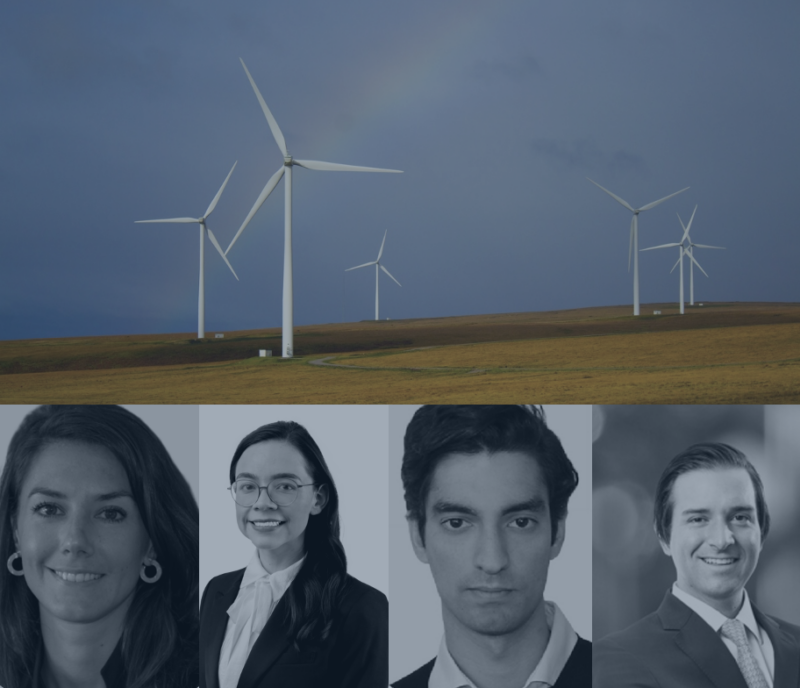Bolivia & the Global Fight Against Climate Change
In the past year, the Bolivian government has emerged as an outspoken critic of climate change policies.
On March 29, 2023, the Inter-American Dialogue hosted a private discussion with Victoria Gama and Arun Pillai-Essex of Verisk Maplecroft, as well as with Alejandro Martínez de Hoz of White & Case, to explore the ever-changing risks and opportunities facing industries of the energy transition. As the transition picks up speed, companies must forecast and prepare for cascading climate risks, industry transformation, energy and climate litigation, and unforeseen disruptors. Overall, panelists discussion centered around sourcing clean supply chains, mitigating social governance risks, navigating legal disputes in Latin America’s energy transition, and the future of climate litigation.
On an international level, increased attention towards human rights violations throughout entire energy transition value chains means that companies must craft robust due diligence processes to comply with more stringent standards. For example, European countries importing minerals from Chile or Argentina will need to carefully examine if these minerals comply with the EU’s proposed Human Rights and Environmental Due Diligence (HREDD) legislation. One panelist also remarked that pressure to clean up supply chains is also increasing due to a “new generation” of investment treaties proliferating around the world. Prior treaties rarely or only vaguely referred to environmental or social protections, but newer treaties tend to decrease foreign investors’ protection and increase investors’ responsibility for ESG impacts. Some treaties now even specify that companies must complete a social assessment of their investment before proceeding. However, panelists noted, ESG compliance has become complicated due to unreliable audit services in countries with poor human rights records like China. At the same time, regulatory environments in Latin America make it difficult to “friend shore” and bring manufacturing or refining facilities into socially compliant communities in need of investment. Moreover, a lack of technical knowledge and implementation capacity impedes regulation change.
Within clean energy supply chains, sourcing of critical minerals brings manifold risks for companies advancing the energy transition. Panelists explained that different minerals pose different levels of risk in different countries, and community reactions to proposed mineral development vary widely. For example, lithium production presents a higher risk in Chile than Peru or Argentina, based on a variety of factors like water stress, jeopardization of Indigenous rights, and incomplete community consultation processes. Moreover, lack of Indigenous land tenure complicates projects and exacerbates risks throughout Latin America.
To prevent, mitigate, and remedy human rights impacts from energy projects, including renewables projects, corporations should consider a variety of tools available for use. Companies can create robust human rights due diligence processes and impact assessments, publish robust ESG reports in line with regulatory requirements, sign community impact benefit agreements with host communities, and participate in sector wide ESG initiatives. Thorough community consultation processes are paramount, as renewable energy projects are most at risk of cancellation if they do not adequately consult Indigenous communities. While many Latin American countries have ratified ambitious human rights accords, panelists claimed that a lack of technical ability stymies the implementation of these agreements, leading to incomplete and ineffective consultation processes. Panelists highlighted that the best way to ensure a positive interaction with local communities is for companies to work directly on the ground and engage in conversations with all project stakeholders through a third party mediator to compile a list of key community concerns to be addressed.
On the legal side, as the energy transition progresses, disputes between investors and states are multiplying. This owes primarily to two, sometimes competing, agendas: first, leaders must work towards Paris Agreement goals, but, second, they must attempt to do so without impacting existing investments. However, policy levers driving the transition vary widely, as illustrated in North America. The US Inflation Reduction Act’s market-based approach incentivizes increased supply and demand for transition technologies; in comparison, Canada’s carbon pricing and proposed emissions cap and Mexico’s energy “counter-reform” and resource nationalism mark very different approaches. Given the interconnectedness of global energy systems, these stark regulatory differences and the potential for rapid regulatory change could likely increase disputes going forward. Energy concessions are already tenuous in Latin America, as government turnover tends to run on a four-year cycle, oftentimes swinging volatilely between pro-foreign investment versus less investment-friendly administrations. Ensuring that treaties and investment deals consider this risk is essential to protecting 20-40 yearlong investments. Latin America is one of the most sued regions in the world: according to panelists, 30 percent of cases against countries are directed to those in the region, and of these cases, 30 percent revolve around energy. Most of them are related to expropriation and political volatility.
However, Latin America’s rich renewable energy resources still stand to be an asset for investors if they take proper precautions. For example, companies can pursue stability agreements, which are contracts negotiated and signed by state entities ensuring continuity of existing investment policy and compensation in the case that a change in regulations impacts the proposed investment. These are complex contracts, but they tend to protect both companies and states from having to go down the expensive and time-consuming arbitration route. However, when agreements are not in place, solving disputes through arbitration, rather than litigation, has become increasingly common. As many lower courts do not have the technical expertise to resolve multi-billion-dollar energy investment disputes, and potentially face governmental pressure, companies now resort to arbitration more frequently.
One burgeoning field that companies should keep on their radar is climate litigation linked to the right to a healthy environment. For example, in a 2021 Netherlands court case against Shell plc, the court ordered Shell to reduce its global carbon emissions in all scopes by 45 percent by 2030 (compared to 2019 levels). This was the first time that a court ruled against a corporation based on climate change, a ruling that Shell has appealed. It is yet unclear how this will impact litigation and risks for companies moving forward, but it will likely significantly reinforce citizens’ ability to amplify their legal standing in any court globally. In addition, climate change attribution science promises to keep developing as a tool to hold governments and the private sector accountable in the climate crisis. A panelist offered the example that in the future, an EU citizen could potentially bring a case against Argentina’s Vaca Muerta project for its contribution to climate change and thus deterioration of the global environment. Already, there are over 2000 climate litigation climate cases worldwide, and 40 were filed in Latin America. Companies should track these developments closely.
In closing, panelists agreed that ESG used to be viewed only as a tool to manage reputational risk. However, under increasing pressure from stakeholders and governments, companies now view ESG concerns as a strategic issue that will only grow in importance. With increasing ambition on all sides, companies are taking tangible steps towards their niche within the transition to advance progress through their capital decisions.
In the past year, the Bolivian government has emerged as an outspoken critic of climate change policies.
As global temperatures continue to rise with the global community stalled on any way to stop them, countries must prepare to adapt to increasingly volatile environmental conditions.
Colombia has to remain competitive with other major producers such as Mexico to attract needed investment in extractive industries.

